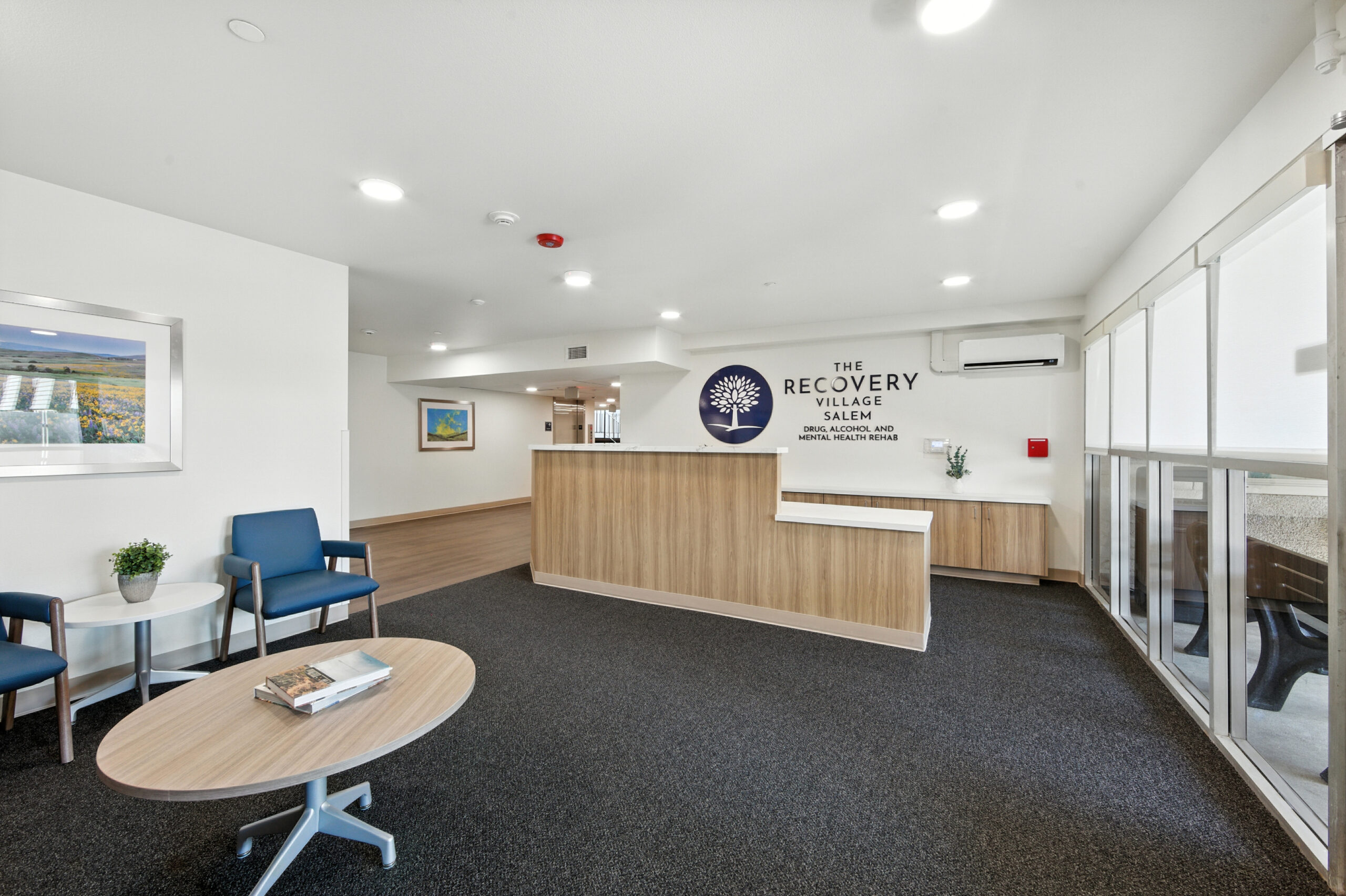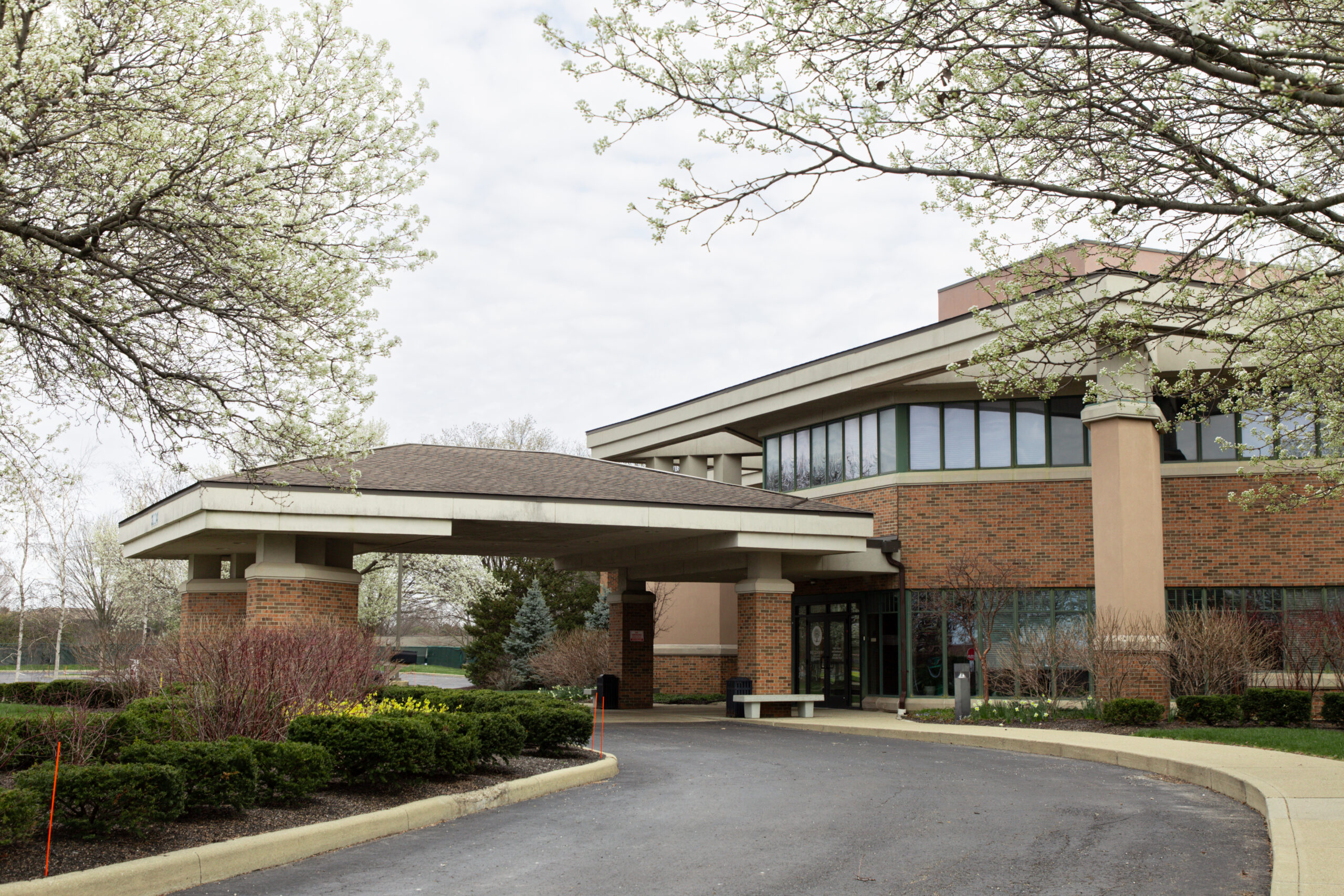Anxiety is one of the most common mental health conditions affecting millions of people worldwide. While everyone experiences occasional worry or nervousness, anxiety disorders represent a more persistent and overwhelming form of fear that can significantly impact daily life. This comprehensive guide explores everything you need to know about anxiety disorders, from recognizing symptoms to understanding effective treatment options.
What Are Anxiety Disorders?
Anxiety disorders are a group of mental health conditions characterized by excessive fear, worry, and related behavioral disturbances that persist for extended periods. Unlike normal stress responses that help us navigate challenging situations, anxiety disorders involve disproportionate reactions to perceived threats that can interfere with work, relationships, and overall quality of life.
The key distinction between normal anxiety and an anxiety disorder lies in intensity, duration, and impact. While occasional anxiety before a job interview or important presentation is completely normal, anxiety disorders involve persistent symptoms that last for months and significantly impair daily functioning.
Understanding Normal vs. Problematic Anxiety
Normal anxiety serves an important purpose in our lives. It helps us stay alert to potential dangers, motivates us to prepare for important events, and can even improve performance in certain situations. This healthy form of anxiety follows a predictable pattern: it rises in response to a specific stressor and decreases once the situation is resolved.
Anxiety becomes problematic when it persists without clear triggers, remains intense even after stressful situations have passed, or becomes so overwhelming that it prevents normal activities. People with anxiety disorders often experience symptoms that seem disproportionate to the actual threat level of their circumstances.
Types of Anxiety Disorders
Generalized Anxiety Disorder (GAD)
Generalized Anxiety Disorder is characterized by persistent, excessive worry about various aspects of daily life, including work, health, family, and finances. People with GAD often describe feeling like they’re constantly “on edge” and find it difficult to control their worrying thoughts.
Common symptoms of GAD include:
- Excessive worry occurring more days than not for at least six months
- Difficulty controlling worry and intrusive thoughts
- Restlessness and feeling keyed up or on edge
- Fatigue that may result from constant mental tension
- Difficulty concentrating or experiencing mind going blank
- Irritability that may affect relationships and work performance
- Muscle tension, particularly in the shoulders, neck, and jaw
- Sleep disturbances, including trouble falling asleep or staying asleep
GAD typically develops gradually and can begin at any age, though it often starts in childhood or adolescence. The chronic nature of this condition means that symptoms tend to fluctuate over time, becoming more severe during periods of stress.
Panic Disorder
Panic disorder involves recurrent, unexpected panic attacks coupled with persistent concern about future attacks. A panic attack is a sudden surge of intense fear or discomfort that reaches its peak within minutes and includes both physical and cognitive symptoms.
During a panic attack, people may experience:
- Rapid heartbeat or heart palpitations
- Sweating and trembling or shaking
- Shortness of breath or feelings of suffocation
- Chest pain or discomfort
- Nausea or abdominal distress
- Dizziness or lightheadedness
- Feelings of unreality or detachment from oneself
- Fear of losing control or “going crazy”
- Fear of dying
- Numbness or tingling sensations
The unpredictable nature of panic attacks often leads to anticipatory anxiety, where individuals become fearful of having another attack. This can result in significant lifestyle changes as people begin avoiding situations where they previously experienced panic attacks.
Social Anxiety Disorder
Social anxiety disorder, previously known as social phobia, involves intense fear of social situations where the person might be scrutinized by others. This goes far beyond normal shyness and can severely limit social, academic, and professional opportunities.
People with social anxiety disorder may fear:
- Speaking in public or in groups
- Meeting new people or attending social gatherings
- Eating or drinking in front of others
- Using public restrooms
- Being the center of attention
- Performance situations like presentations or interviews
Physical symptoms often accompany social anxiety, including blushing, excessive sweating, trembling, rapid heartbeat, and muscle tension. These visible symptoms can create additional embarrassment and reinforce the cycle of social avoidance.
Specific Phobias
Specific phobias involve intense, irrational fear of particular objects or situations that pose little or no actual danger. The fear response is immediate and overwhelming, often leading to complete avoidance of the feared stimulus.
Common categories of specific phobias include:
Animal phobias: Fear of dogs, cats, snakes, spiders, or insects
Natural environment phobias: Fear of heights, storms, water, or darkness
Blood-injection-injury phobias: Fear of needles, medical procedures, or seeing blood
Situational phobias: Fear of flying, elevators, enclosed spaces, or driving
Other phobias: Fear of choking, loud sounds, or costumed characters
The severity of specific phobias can range from mild discomfort to complete life disruption, depending on how frequently the person encounters their feared object or situation.
Agoraphobia
Agoraphobia involves fear of being in situations where escape might be difficult or embarrassing, or where help might not be available in case of panic-like symptoms. Contrary to popular belief, agoraphobia isn’t simply a fear of open spaces, but rather a complex anxiety disorder that can severely restrict mobility and independence.
Situations that commonly trigger agoraphobic fears include:
- Using public transportation
- Being in open spaces like parking lots or marketplaces
- Being in enclosed spaces such as theaters or shopping malls
- Standing in line or being in crowds
- Being outside the home alone
In severe cases, people with agoraphobia may become housebound, unable to leave their home without experiencing intense anxiety or panic attacks.
Symptoms and Signs of Anxiety Disorders
Physical Symptoms
Anxiety disorders manifest through numerous physical symptoms that can be distressing and sometimes mistaken for medical conditions. Understanding these symptoms helps individuals recognize when they may be experiencing anxiety rather than a physical health problem.
Cardiovascular symptoms include rapid heartbeat, heart palpitations, chest pain or tightness, and elevated blood pressure. These symptoms often lead people to worry they’re having a heart attack, which can intensify the anxiety response.
Respiratory symptoms encompass shortness of breath, rapid breathing, feeling like you can’t catch your breath, and sensations of choking or suffocation. Some people may hyperventilate during anxiety episodes, leading to additional symptoms like dizziness and tingling.
Gastrointestinal symptoms frequently include nausea, stomach upset, diarrhea, loss of appetite, and abdominal pain. The connection between anxiety and digestive issues is well-established, as stress hormones directly impact gut function.
Neurological symptoms may involve dizziness, lightheadedness, headaches, muscle tension, trembling or shaking, and numbness or tingling in hands or feet. These symptoms result from the body’s stress response and changes in blood flow and muscle tension.
Other physical manifestations include excessive sweating, hot or cold flashes, fatigue, insomnia, and increased urination. These symptoms can vary significantly between individuals and may change over time.
Emotional and Psychological Symptoms
The emotional impact of anxiety disorders extends beyond simple worry or fear. People may experience persistent feelings of dread, anticipating that something terrible will happen even when there’s no logical reason for concern.
Cognitive symptoms include racing thoughts, difficulty concentrating, memory problems, and intrusive worries that are difficult to control. Many people describe their minds as constantly active, jumping from one worry to another without resolution.
Emotional symptoms encompass irritability, restlessness, feeling overwhelmed, sense of impending doom, and emotional numbness. These feelings can strain relationships and make it difficult to enjoy previously pleasurable activities.
Behavioral symptoms often involve avoidance of feared situations, procrastination, seeking constant reassurance from others, and developing rigid routines to manage anxiety. Some people may also experience changes in appetite, sleep patterns, and social behavior.
Impact on Daily Life
Anxiety disorders can significantly impair various aspects of daily functioning. In academic and professional settings, anxiety may lead to decreased performance, increased absences, difficulty making decisions, and avoiding challenging tasks or opportunities.
Social relationships often suffer as anxiety may cause withdrawal from friends and family, difficulty maintaining conversations, and avoidance of social gatherings. Romantic relationships can be particularly affected when anxiety creates excessive need for reassurance or causes avoidance of intimacy.
Physical health may also decline due to chronic stress, sleep disruption, changes in appetite, and avoiding medical care. The constant state of arousal associated with anxiety disorders can weaken the immune system and contribute to various health problems.
Causes and Risk Factors
Biological Factors
Research indicates that anxiety disorders often run in families, suggesting a genetic component to their development. People with first-degree relatives who have anxiety disorders are more likely to develop these conditions themselves, though genetics alone don’t determine whether someone will develop an anxiety disorder.
Brain chemistry plays a crucial role in anxiety disorders. Neurotransmitters such as serotonin, norepinephrine, and gamma-aminobutyric acid (GABA) help regulate mood and anxiety levels. Imbalances in these chemical messengers can contribute to the development and maintenance of anxiety symptoms.
Brain structure and function differences have been observed in people with anxiety disorders. The amygdala, which processes fear and emotional responses, often shows increased activity in individuals with anxiety disorders. Additionally, areas of the brain responsible for executive function and emotional regulation may function differently.
Hormonal factors can also influence anxiety levels. Thyroid problems, hormonal changes during pregnancy or menopause, and other endocrine disorders can trigger or worsen anxiety symptoms.
Environmental Factors
Traumatic experiences are significant risk factors for developing anxiety disorders. These may include childhood abuse, neglect, witnessing violence, natural disasters, accidents, or other life-threatening events. The impact of trauma can be immediate or delayed, sometimes manifesting years after the initial experience.
Chronic stress from ongoing life circumstances such as financial difficulties, relationship problems, work stress, or caregiving responsibilities can gradually wear down coping mechanisms and lead to anxiety disorders.
Learned behaviors can contribute to anxiety development. Children who grow up in environments where anxiety is modeled by parents or caregivers may learn maladaptive coping strategies or develop heightened sensitivity to potential threats.
Substance use can both trigger and result from anxiety disorders. Caffeine, alcohol, and certain medications can worsen anxiety symptoms, while some people may use substances as a way to self-medicate their anxiety.
Psychological Factors
Personality traits such as perfectionism, high sensitivity, and tendency toward negative thinking can increase vulnerability to anxiety disorders. People who are naturally more cautious or who have difficulty tolerating uncertainty may be at higher risk.
Cognitive patterns including catastrophic thinking, overestimation of threat, and underestimation of coping abilities can maintain and worsen anxiety symptoms. These thought patterns often develop early in life and become automatic responses to stress.
Previous mental health conditions such as depression can increase the risk of developing anxiety disorders. Many people experience both anxiety and depression simultaneously, a condition known as comorbidity.
Diagnosis and Assessment
Professional Evaluation Process
Diagnosing anxiety disorders requires a comprehensive evaluation by a qualified mental health professional. This process typically begins with a detailed clinical interview where the practitioner gathers information about symptoms, their duration and severity, and their impact on daily functioning.
Medical evaluation is often necessary to rule out physical conditions that might cause anxiety-like symptoms. Conditions such as hyperthyroidism, heart problems, respiratory issues, and certain medications can produce symptoms similar to anxiety disorders.
Diagnostic criteria from the Diagnostic and Statistical Manual of Mental Disorders (DSM-5) provide standardized guidelines for identifying specific anxiety disorders. These criteria include specific symptoms, duration requirements, and functional impairment thresholds.
Assessment tools such as standardized questionnaires and rating scales help clinicians quantify symptom severity and track progress over time. Common tools include the Generalized Anxiety Disorder 7-item scale (GAD-7) and Beck Anxiety Inventory.
Self-Assessment and Recognition
While professional diagnosis is essential, recognizing potential signs of anxiety disorders can help individuals seek appropriate help. Keeping a symptom diary that tracks anxiety levels, triggers, and impacts can provide valuable information for healthcare providers.
Important questions to consider include:
- Do anxiety symptoms occur most days for several weeks or months?
- Do these symptoms interfere with work, relationships, or daily activities?
- Are you avoiding situations or activities due to anxiety?
- Do you experience physical symptoms that can’t be explained by medical conditions?
- Are you using alcohol, drugs, or other substances to cope with anxiety?
Treatment Options
Psychotherapy
Cognitive Behavioral Therapy (CBT) is considered the gold standard for treating anxiety disorders. This evidence-based approach helps individuals identify and change negative thought patterns and behaviors that contribute to anxiety. CBT typically involves 12-20 sessions and focuses on developing practical coping strategies.
The cognitive component of CBT teaches people to recognize and challenge anxious thoughts. Common cognitive distortions in anxiety include catastrophizing (imagining the worst possible outcome), all-or-nothing thinking, and overestimating the probability of negative events. Through guided practice, individuals learn to evaluate thoughts more realistically and develop balanced perspectives.
The behavioral component emphasizes gradual exposure to feared situations while practicing relaxation techniques. This process, called systematic desensitization, helps reduce the anxiety response over time and builds confidence in managing challenging situations.
Exposure therapy is particularly effective for specific phobias, social anxiety, and panic disorder. This approach involves controlled, gradual exposure to feared objects or situations in a safe environment. The exposure typically follows a hierarchy, starting with less threatening situations and progressively moving toward more challenging ones.
Acceptance and Commitment Therapy (ACT) focuses on accepting anxious thoughts and feelings rather than fighting them, while committing to actions aligned with personal values. This approach can be particularly helpful for people who have struggled with traditional CBT approaches.
Dialectical Behavior Therapy (DBT) teaches skills for managing intense emotions, including anxiety. Originally developed for borderline personality disorder, DBT has proven effective for various anxiety conditions, particularly when anxiety is accompanied by emotional dysregulation.
Medication Options
Medication can be an effective treatment for anxiety disorders, either alone or in combination with psychotherapy. The choice of medication depends on the specific type of anxiety disorder, symptom severity, individual response, and potential side effects.
Selective Serotonin Reuptake Inhibitors (SSRIs) are often the first-line medication treatment for anxiety disorders. These medications work by increasing serotonin levels in the brain and include drugs like sertraline, escitalopram, and paroxetine. SSRIs generally have fewer side effects than older antidepressants and are considered safe for long-term use.
Serotonin-Norepinephrine Reuptake Inhibitors (SNRIs) such as venlafaxine and duloxetine work on both serotonin and norepinephrine systems. These medications can be particularly effective for people who haven’t responded well to SSRIs.
Benzodiazepines provide rapid relief from anxiety symptoms but are typically prescribed for short-term use due to their potential for dependence. These medications include lorazepam, alprazolam, and clonazepam. While effective for immediate anxiety relief, they’re generally not recommended as long-term solutions.
Beta-blockers can help manage physical symptoms of anxiety such as rapid heartbeat and trembling. These medications are often used for performance anxiety or specific situational anxiety.
Buspirone is an anti-anxiety medication that works differently from other options and has a lower risk of dependence. It may be particularly useful for people who cannot take other anxiety medications.
Lifestyle Interventions
Regular exercise has been shown to be as effective as medication for some people with mild to moderate anxiety. Physical activity helps reduce stress hormones, releases endorphins, and provides a healthy outlet for nervous energy. Both aerobic exercise and strength training can be beneficial, with even moderate activity levels showing positive effects.
Sleep hygiene is crucial for managing anxiety, as sleep deprivation can worsen symptoms significantly. Establishing consistent sleep and wake times, creating a relaxing bedtime routine, limiting caffeine and screen time before bed, and maintaining a comfortable sleep environment can improve both sleep quality and anxiety levels.
Stress management techniques include progressive muscle relaxation, deep breathing exercises, meditation, and mindfulness practices. These techniques help activate the body’s relaxation response and can be used in the moment when anxiety arises or as preventive measures when practiced regularly.
Dietary considerations may impact anxiety levels. Limiting caffeine and alcohol, maintaining stable blood sugar levels through regular meals, and ensuring adequate nutrition can support overall mental health. Some people find that certain foods or additives trigger anxiety symptoms.
Coping Strategies and Self-Help Techniques
Breathing and Relaxation Techniques
Diaphragmatic breathing is one of the most effective immediate interventions for anxiety. This technique involves breathing slowly and deeply from the diaphragm rather than shallow chest breathing. To practice, place one hand on your chest and another on your stomach. Breathe in slowly through your nose, ensuring that your stomach hand moves more than your chest hand. Hold briefly, then exhale slowly through pursed lips.
Progressive muscle relaxation involves systematically tensing and then relaxing different muscle groups throughout the body. Start with your toes and work upward, tensing each muscle group for 5-10 seconds before releasing. This technique helps identify areas of physical tension and promotes overall relaxation.
Mindfulness meditation teaches present-moment awareness without judgment. Simple mindfulness exercises include focusing on breath, observing thoughts without engaging them, or paying attention to physical sensations. Regular mindfulness practice can reduce overall anxiety levels and improve emotional regulation.
Cognitive Techniques
Thought challenging involves examining anxious thoughts for accuracy and balance. When experiencing anxiety, ask yourself: What evidence supports this thought? What evidence contradicts it? What would I tell a friend in this situation? What’s the most realistic outcome? This process helps develop more balanced thinking patterns.
Worry time is a technique where you schedule a specific time each day to focus on worries, typically 15-20 minutes. When anxious thoughts arise outside this time, acknowledge them and postpone detailed thinking until your designated worry period. This helps contain anxiety rather than letting it dominate the entire day.
Grounding techniques help manage acute anxiety by focusing attention on the present moment. The “5-4-3-2-1” technique involves identifying 5 things you can see, 4 things you can touch, 3 things you can hear, 2 things you can smell, and 1 thing you can taste. This redirects attention away from anxious thoughts to immediate sensory experience.
Behavioral Strategies
Gradual exposure can be practiced independently for mild anxiety. Create a list of avoided situations ranked from least to most anxiety-provoking. Start with the least threatening situation and practice staying in that situation until anxiety naturally decreases. Gradually work up to more challenging situations over time.
Activity scheduling involves planning pleasant and meaningful activities to counteract the tendency to withdraw when anxious. Include a mix of routine activities, social interactions, and enjoyable pursuits. Having structure and positive experiences can improve mood and reduce overall anxiety levels.
Problem-solving skills help address practical concerns that may contribute to anxiety. Break overwhelming problems into smaller, manageable steps. Focus on what you can control and develop action plans for addressing specific issues rather than ruminating on worst-case scenarios.
When to Seek Professional Help
Recognizing Severe Symptoms
Professional help should be sought when anxiety symptoms significantly interfere with daily functioning, persist for several weeks or months, or cause considerable distress. Warning signs include persistent avoidance of important activities, inability to work or attend school, social isolation, substance use to cope with anxiety, or thoughts of self-harm.
Crisis situations requiring immediate attention include suicidal thoughts, panic attacks that feel life-threatening, complete inability to function, or dangerous behaviors related to anxiety. Emergency services or crisis hotlines should be contacted if there’s immediate risk of harm.
Physical symptoms that mimic medical emergencies should be evaluated promptly. While these may be anxiety-related, it’s important to rule out medical causes, especially for chest pain, severe shortness of breath, or other concerning physical symptoms.
Types of Mental Health Professionals
Psychiatrists are medical doctors who can prescribe medication and provide psychotherapy. They’re particularly helpful when medication management is needed or when anxiety is complicated by other mental health conditions.
Psychologists have doctoral degrees in psychology and provide psychotherapy using various evidence-based approaches. Many specialize in anxiety disorders and can offer comprehensive psychological assessment and treatment.
Licensed clinical social workers and licensed professional counselors provide psychotherapy and often have specialized training in anxiety disorders. They may work in various settings including private practice, community mental health centers, and healthcare systems.
Primary care physicians can provide initial assessment and treatment for anxiety disorders, including prescribing medication. They can also provide referrals to mental health specialists when needed.
Support Systems and Resources
Building Support Networks
Family and friends can provide crucial emotional support, but they may need education about anxiety disorders to be most helpful. Sharing information about your condition and specific ways others can help can strengthen these relationships and improve support quality.
Support groups connect individuals with others who understand the challenges of living with anxiety disorders. These groups may be led by mental health professionals or be peer-led, and can be found in person or online. Sharing experiences and coping strategies with others can reduce isolation and provide practical insights.
Online communities offer 24/7 support and connection with others who have similar experiences. While these can be helpful supplements to professional treatment, it’s important to verify the credibility of information shared and not use online support as a replacement for professional care.
Educational Resources
Reputable websites such as the National Institute of Mental Health (nimh.nih.gov), Anxiety and Depression Association of America (adaa.org), and Mayo Clinic provide evidence-based information about anxiety disorders, treatment options, and self-help strategies.
Books and workbooks written by mental health professionals can provide structured self-help approaches. Look for books based on cognitive-behavioral therapy or other evidence-based treatments. Many workbooks include exercises and worksheets for practicing coping skills.
Mobile apps designed for anxiety management can provide guided relaxation exercises, mood tracking, and coping skill reminders. While apps shouldn’t replace professional treatment, they can be useful supplements to other interventions.
Prevention and Long-term Management
Developing Resilience
Stress management skills practiced regularly can help prevent anxiety from developing or worsening. This includes maintaining work-life balance, setting realistic expectations, and developing healthy ways to cope with unavoidable stress.
Self-care practices such as regular exercise, adequate sleep, healthy nutrition, and engaging in enjoyable activities help maintain overall mental health and provide protection against anxiety symptoms.
Social connections and maintaining supportive relationships provide emotional resources during difficult times. Investing in friendships and family relationships creates a network of support that can help prevent isolation during anxious periods.
Ongoing Management Strategies
Regular monitoring of symptoms helps identify early warning signs of anxiety episodes. Keeping a mood journal or using tracking apps can help recognize patterns and triggers before symptoms become severe.
Maintenance therapy may involve continued medication, periodic therapy sessions, or regular practice of coping skills learned during treatment. Many people benefit from occasional “booster” sessions with their therapist to maintain progress.
Lifestyle adjustments based on what has been learned about personal triggers and effective coping strategies help prevent relapse. This might include avoiding certain stressors when possible, maintaining regular routines, or continuing practices that have proven helpful.
Anxiety disorders are complex but highly treatable conditions that affect millions of people worldwide. Understanding the nature of these disorders, recognizing symptoms, and knowing available treatment options are crucial first steps toward recovery. While anxiety can feel overwhelming, numerous evidence-based treatments can help individuals regain control over their lives and develop effective coping strategies.
The journey toward managing anxiety often involves a combination of professional treatment, self-help strategies, and ongoing support from others. With appropriate care and commitment to recovery, most people with anxiety disorders can experience significant improvement in their symptoms and quality of life.
Remember that seeking help for anxiety is a sign of strength, not weakness. If you or someone you know is struggling with anxiety symptoms, reaching out to a healthcare provider or mental health professional is an important step toward feeling better. Recovery is possible, and with the right support and treatment, anxiety doesn’t have to limit your potential for a fulfilling life.
Whether you’re just beginning to understand your anxiety or you’ve been managing symptoms for years, continued learning about effective coping strategies and staying connected with appropriate professional support can help you maintain progress and achieve your personal goals. Everyone’s journey with anxiety is unique, but no one has to face these challenges alone.
















